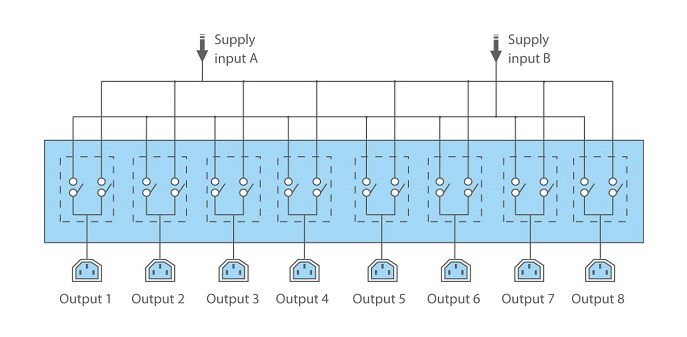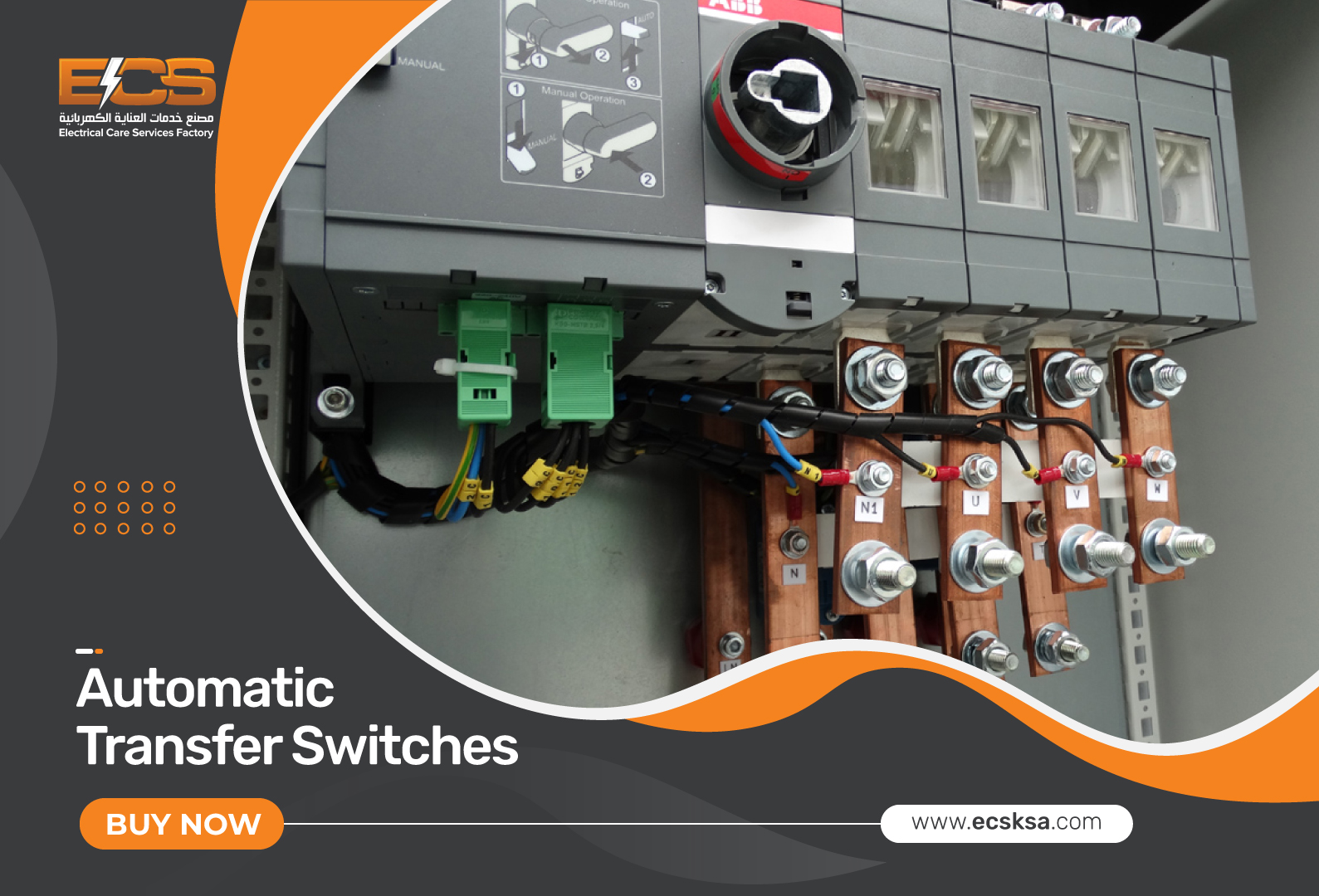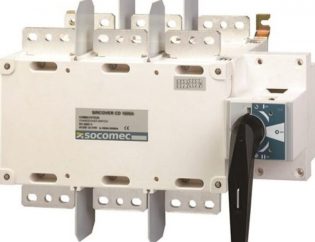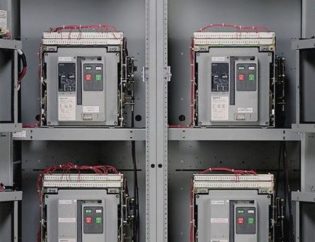How Does an Automatic Transfer Switch Work?
An automatic transfer switch (ATS) is an intelligent device that switches power connections between the primary and alternate sources without human intervention or supervision. Also, ATS uses dedicated control logic to deliver us a continuous power supply using more than one power connection, which can be utility power sources, generators, UPS, solar panels, etc.
The main purpose of ATS is to maintain the power supply for connected loads in an electrical distribution system without any interruption, using all available power sources.
The control logic, also known as the automatic controller, is a microprocessor-based device that has the ability to measure and monitor different parameters of connected power sources. These electrical parameters are frequency, voltage, charge intensity, and more.
When one power source fails to deliver the required magnitude of electrical parameters for the connected loads in your electrical distribution system, ATS instantly switches the connection to the alternate power source if it is available.
Generally, utility power connections are set as primary power sources in ATS configurations, and generators, UPS, and solar panels are set as alternate power sources.
ATS works in a sequence to deliver electrical power using different sources, which happens in the following way.
- Your utility power source becomes unavailable.
- ATS transfers your load to an alternate power source.
- When the primary power source becomes available, ATS switches back to it.
Different ATS Transition Types
The transition between the primary and secondary power sources can be done by transfer switches using open or close options. Every electrical distribution system requires a specific type of transition, which is determined by the required level of security and safety.
Open Transition
In the open transition, there is always a break-before-make transfer. It means that the connected transfer switch in the system breaks its connection with one power source before connecting to the secondary power source. All open transitions contain open-delayed and open in-phase.

Closed Transition
In the closed transition, there is always a make-before-break transfer. It means that the transfer switch connects the load with the secondary power source before disconnecting the connection with the primary power source. As a result, there is no delay in the continuity of the power supply in the electrical distribution system.

Types of ATS Systems
All automatic transfer switches are built while considering only one purpose: to make the power supply available in the electrical distribution system without any delay. Yet, the electrical wiring design and types of loads in your building determine which type of ATS you must use.
Basically, there are four types of ATS systems available in the market.
- Open Transition ATS: Open transition ATS is used where a delay in power resumption can be tolerated, which can be less than a second.
- Closed Transition ATS: Closed transition ATS is employed where you cannot tolerate any delay in the resumption of the power supply.
- Soft Loading Transfer Switch: Soft-loading transfer switches are used where you need an uninterrupted power supply, along with the management of different types of loads. In other words, you can use soft loading switches when you have to manage dynamic loads.
- Bypass Isolation ATS: Bypass isolation ATS is used where multiple types of power systems are installed, such as telecommunication infrastructure, air traffic control systems, support systems, and more. By using these switches, you can isolate one part of the electrical distribution system from the rest of the system.
What are the Advantages and Disadvantages of Automatic Transfer Panel?
In the industry, you’ll find both manual transfer switches and automatic transfer switches. Both provide value according to their requirement in electrical distribution systems. Below, here is a summary of all advantages and disadvantages of automatic transfer switches.
Here are the advantages.
- You don’t have to manually switch your power from a primary to a secondary power source.
- You don’t have to start your generator each time your primary power source becomes unavailable.
- Your backup power is always there for use when you are not present.
- Automatic transfer switches react within a fraction of a second.
Here are the disadvantages.
- Automatic transfer switches are costly. You have to pay a higher cost than manual transfer switches.
- You have to install extra wiring if you want to install an automatic transfer switch, and it also increases your expenses.
- Your generator will always turn on when you aren’t at home. It means that your expenses will increase.
What Does an Automatic Transfer Switch (ATS) Do in a UPS System?
Automatic transfer switches are used to supply resilience to small UPS systems, which must be below 10 kVA. Also, these UPS systems must not be in a parallel configuration.
In a UPS system in any home, there must be two AC power sources. When one power source fails, ATS transfers the load to the second.
The figure below will help you understand.

Here, A & B can be:
- Two different UPS power supplies
- Two different AC utility power supplies
- One utility power supply and one UPS power supply
Conclusion
If you need a continuous power supply at your home or building, you must acquire two power sources. Your primary power source can be a utility connection, and your secondary power source can be a generator, UPS, solar supply, or any other utility power source.
Electrical Care Services (ECSKSA) offers everything from comprehensive turnkey solutions that include generators, UPSs, and ATS panels designed to your unique specifications.
Our ATS panels are very often part of a turnkey standby power solution that connects an automatic transfer switch with UPS and standby generators, all remotely monitored, along with any associated security and safety features.
Please contact the Saudi Arabia’s leading technical experts to ensure that your needs are correctly backed up.
Also, check out our page for the best ATS systems in the market.
Frequently Asked Questions
Q1: What does an automatic transfer switch do?
An automatic transfer switch transfers the electric load from one power supply to another in case of power failure. As a result, your electrical distribution system gets a continuous supply of electricity.
Q2: Do I need an automatic transfer switch on my generator?
If you want to install your generator as a secondary power source in your electrical distribution system, then you need an automatic transfer switch.
Q3: How long do automatic transfer switches last?
Automatic transfer switches last for years. Some can last for over a decade.
Do you have a question in your mind? If so, make sure to fill out the form below!




